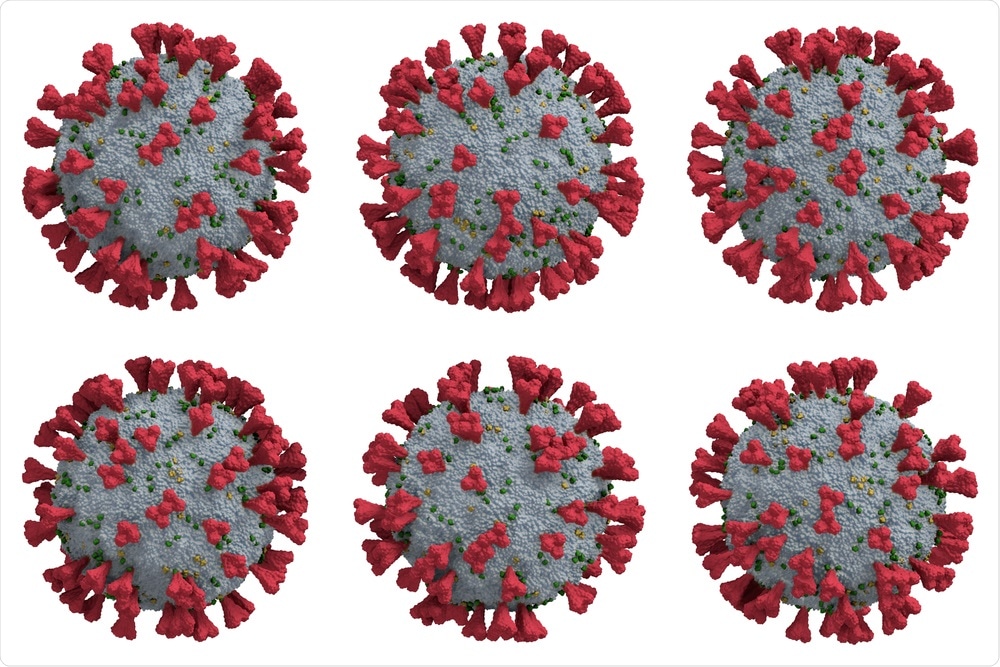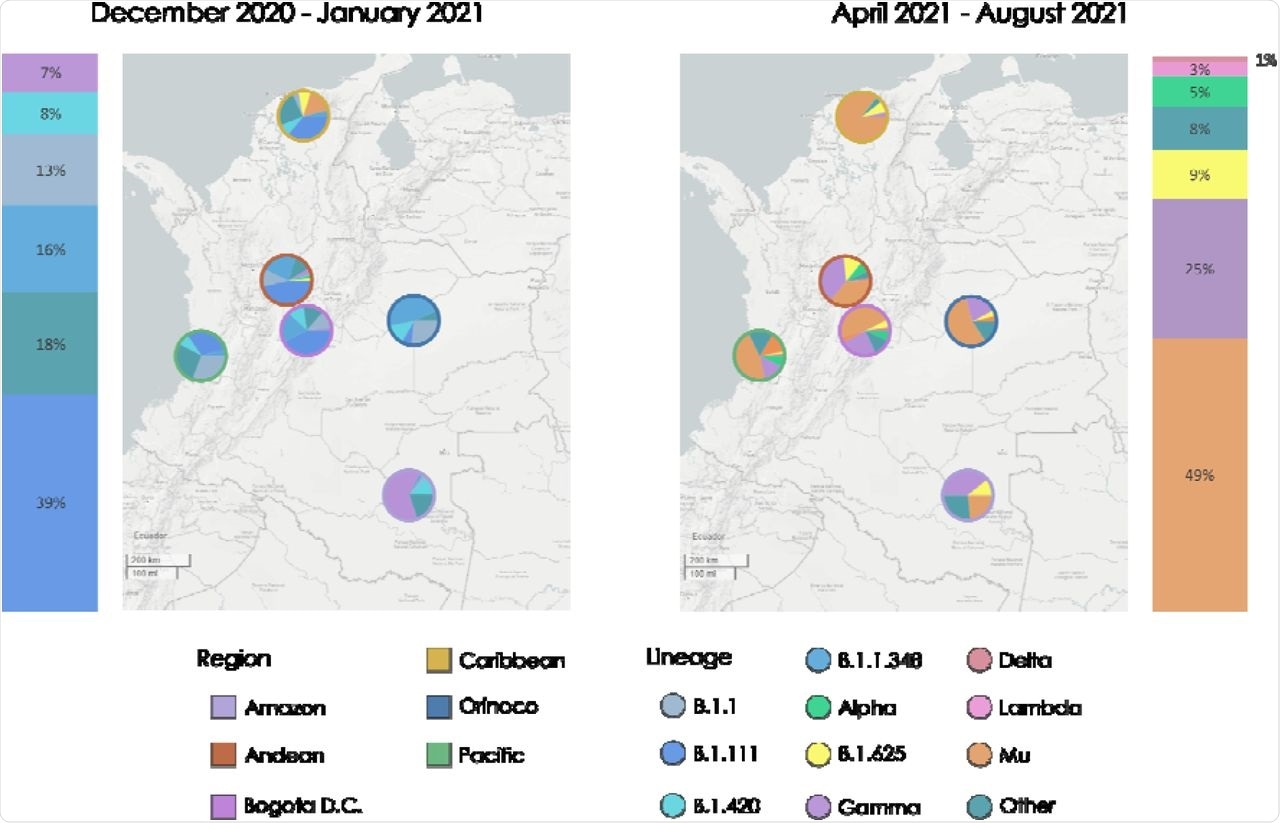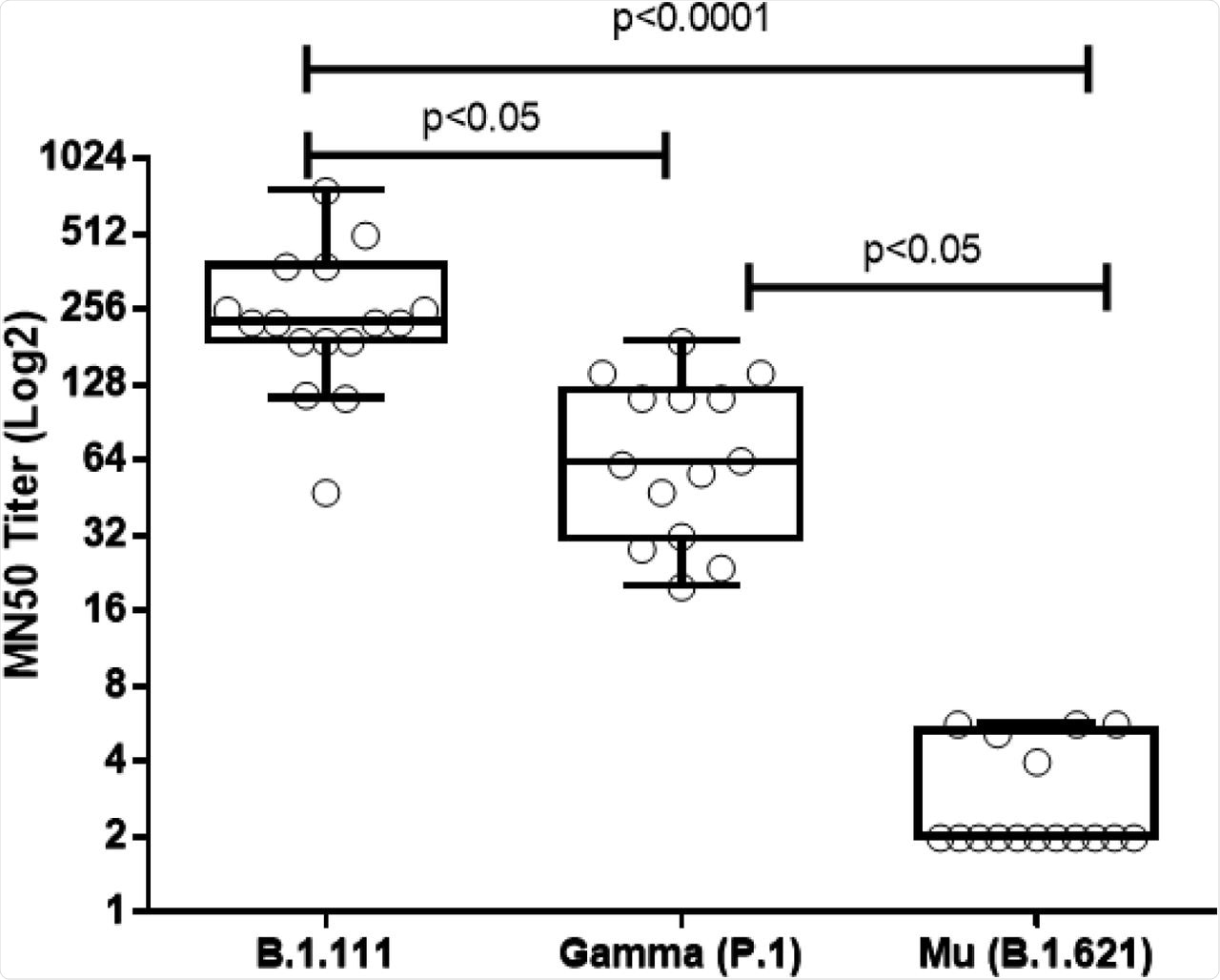Between October and December 2020, genomic epidemiology data from the emerging SARS-CoV-2 lineages B.1.1.7 (Alpha), B.1.351 (Beta), and P.1 (Gamma) suggested a significant association with increased transmissibility and, as a result, a global public health risk.
With this evidence, the United States Centers for Disease Control and Prevention (CDC) and the World Health Organization (WHO) developed a hierarchical classification system to distinguish emerging SARS-CoV-2 variants as a Variant of Interest (VOI) or Variant of Concern (VOC). To date, the WHO has identified four VOCs of the Alpha, Beta, Gamma, and Delta strains, as well as five VOIs including the Eta, Iota, Kappa, Lamda, and Mu strains.
 Study: Low neutralizing antibody titers against the Mu variant of SARS-CoV-2 in BNT162b2 vaccinated individuals. Image Credit: GGGraphics / Shutterstock.com
Study: Low neutralizing antibody titers against the Mu variant of SARS-CoV-2 in BNT162b2 vaccinated individuals. Image Credit: GGGraphics / Shutterstock.com

 This news article was a review of a preliminary scientific report that had not undergone peer-review at the time of publication. Since its initial publication, the scientific report has now been peer reviewed and accepted for publication in a Scientific Journal. Links to the preliminary and peer-reviewed reports are available in the Sources section at the bottom of this article. View Sources
This news article was a review of a preliminary scientific report that had not undergone peer-review at the time of publication. Since its initial publication, the scientific report has now been peer reviewed and accepted for publication in a Scientific Journal. Links to the preliminary and peer-reviewed reports are available in the Sources section at the bottom of this article. View Sources
Background
Following SARS-CoV-2 genomic surveillance in Colombia between December 2020 and April 2021, the novel SARS-CoV-2 B.1.621 lineage was proposed as a VOI. By the end of August 2021, the WHO had confirmed this lineage's VOI status and awarded it the Greek letter "Mu."
The SARS-CoV-2 Mu strain has spread to 43 nations since its discovery, with a stronger presence in the British Virgin Islands, Colombia, the Dominican Republic, Ecuador, and Haiti. In Colombia, B.1.621 moved from the Caribbean region to the rest of the country in six months, ultimately becoming the dominant lineage by the end of August.
Using pseudoviruses and replication-competent SARS-CoV-2, preliminary experiments examining the Mu variant's sensitivity to antibodies generated by the BNT162b2 immunization yielded inconsistent results. In the current study published on the preprint server medRxiv*, a team of researchers from various Columbian institutions used microneutralization assays to assess the neutralizing antibody titers in BNT162b2-vaccinated people against SARS-CoV-2 isolates from the Mu, Gamma, and B.1.111 lineages.
About the study
The WHO has identified the SARS-CoV-2 Mu and Gamma variants VOCs, whereas the B.1.111 strain was classified as a variant without genetic markers linked with higher virulence. The authors were able to determine the spatiotemporal distribution of the most representative SARS-CoV-2 lineages in Colombia during the two epidemiological peaks of SARS-CoV-2 in 2021 using molecular epidemiologic data.
By the end of December 2020, probabilistic sampling sequences revealed a large increase in Mu and Gamma cases, which were discovered during the second peak in opposite parts of the country. The Mu variant was discovered in the Caribbean region to the north, while the Gamma variant was discovered in the Amazon to the south.
 SARS-CoV-2 lineage distribution in the five Colombian regions and Bogotá D.C December 2020 - January 2021 (left), and April-August 2021 (right). Ring colors represent the region. Interactive map available at https://microreact.org/project/6GjGXeoUW7uVauMTFCFEkE/d9357c6c.
SARS-CoV-2 lineage distribution in the five Colombian regions and Bogotá D.C December 2020 - January 2021 (left), and April-August 2021 (right). Ring colors represent the region. Interactive map available at https://microreact.org/project/6GjGXeoUW7uVauMTFCFEkE/d9357c6c.
By the end of August 2021, those lineages had become dominant and widespread across Colombia, accounting for about 74% of COVID-19 cases. By the conclusion of the third peak, Mu represented nearly twice the sequences of the Gamma variant and almost half of the total sequences of SARS-CoV-2 in the country.
A panel of human sera from 14 volunteers between the ages 27 and 58 who had been vaccinated with BNT162b2 were tested. Anti-spike immunoglobulin G (IgG) antibody titers were found in all samples; however, no anti-nucleoprotein IgG antibodies were detected, thus indicating that vaccination-induced antibodies were the only ones present. With a geometric mean titer (GMT) of 224.2 TCID50, serum samples showed substantial neutralization against the B.1.111 lineage. The GMT for the Gamma variant was 65.2 TCID50, which was 3.4 times lower than the GMT for B.1.111.
In comparison to the B.1.111 and Gamma lineages, the GMT for the Mu variant was 41 and 20 times lower, respectively. It is worth noting that 11 of the 14 blood samples (78.5%) failed to kill the virus at the lowest dilution (1:4) tested. Finally, when comparing B.1.111 to Mu, there was a substantial association between neutralizing antibody titers (MN50) and IgG anti-spike antibodies (BAU/mL). The Gamma variant, on the other hand, showed no significant association.
 TCID50-based assays were performed by incubating 120 TCDI50 of each SARS-CoV-2 isolate with five 2-fold serial dilutions of sera from BNT162b2 vaccinated volunteers. The MN50 titer was calculated by the Reed-Muench formula. Statistical differences between the median values of MN50 titers against Mu, Gamma, and B.1.111 variants were determined using the Kruskal-Wallis test followed by Dunn’s post hoc test for multiple comparisons. An arbitrary MN50 titer value of 2 was assigned to the 11 out of 16 serum samples that do not neutralize the virus at the lowest dilution (<1/4).
TCID50-based assays were performed by incubating 120 TCDI50 of each SARS-CoV-2 isolate with five 2-fold serial dilutions of sera from BNT162b2 vaccinated volunteers. The MN50 titer was calculated by the Reed-Muench formula. Statistical differences between the median values of MN50 titers against Mu, Gamma, and B.1.111 variants were determined using the Kruskal-Wallis test followed by Dunn’s post hoc test for multiple comparisons. An arbitrary MN50 titer value of 2 was assigned to the 11 out of 16 serum samples that do not neutralize the virus at the lowest dilution (<1/4).
Implications
Surprisingly, genomic surveillance and laboratory studies with the emerging lineage B1+L249S+E484K identified concurrently with the Mu variant in the same geographic region of Colombia revealed reduced neutralization of convalescent sera, as well as a decline in cases associated with this variant,. Taken together, these observations demonstrate that this lineage does not pose a public health threat in Colombia.
As a result, the escape of vaccination antibodies and substantial growth in Mu cases in Colombia, even with a bigger impact than the Gamma VOC, suggest that the Mu strain of SARS-CoV-2 can be classed as VOC, depending on dispersion and global instances.
To further characterize the immunologic effects of SARS-CoV-2 vaccines, more research assessing cell responses to SARS-CoV-2 immunization must be considered. Finally, this study highlights the necessity of continuing to monitor new variations, as well as the need to assess VOC/VOI resistance to humoral immunity evoked by vaccinations currently in use in the country.

 This news article was a review of a preliminary scientific report that had not undergone peer-review at the time of publication. Since its initial publication, the scientific report has now been peer reviewed and accepted for publication in a Scientific Journal. Links to the preliminary and peer-reviewed reports are available in the Sources section at the bottom of this article. View Sources
This news article was a review of a preliminary scientific report that had not undergone peer-review at the time of publication. Since its initial publication, the scientific report has now been peer reviewed and accepted for publication in a Scientific Journal. Links to the preliminary and peer-reviewed reports are available in the Sources section at the bottom of this article. View Sources
Journal references:
- Preliminary scientific report.
Alvarez-Diaz, D. A., Munoz, A. L., Tavera-Rodriguez, P., et al. (2021). Low neutralizing antibody titers against the Mu variant of SARS-CoV-2 in BNT162b2 vaccinated individuals. medRxiv. doi:10.1101/2021.11.19.21266552, https://www.medrxiv.org/content/10.1101/2021.11.19.21266552v1
- Peer reviewed and published scientific report.
Álvarez-Díaz, Diego A., Ana Luisa Muñoz, Pilar Tavera-Rodríguez, María T. Herrera-Sepúlveda, Hector Alejandro Ruiz-Moreno, Katherine Laiton-Donato, Carlos Franco-Muñoz, et al. 2022. “Low Neutralizing Antibody Titers against the Mu Variant of SARS-CoV-2 in 31 BNT162b2 Vaccinated Individuals in Colombia.” Vaccines 10 (2): 180. https://doi.org/10.3390/vaccines10020180. https://www.mdpi.com/2076-393X/10/2/180.